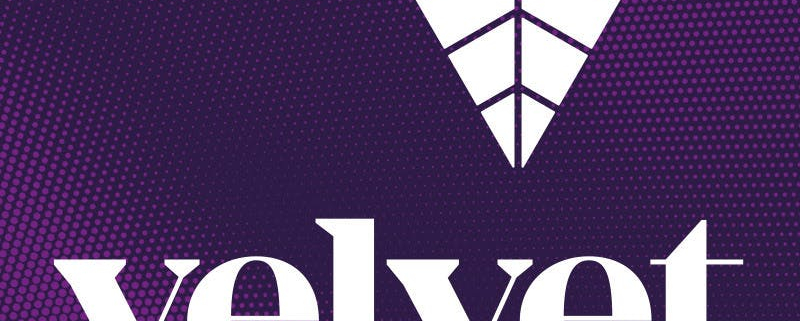Cannabis 101: Breaking down Cannabis and what it does for us as consumers
Cannabis 101: Breaking down Cannabis and what it does for us as consumers
Written By Velvet Cannabis a cannabis company located in Eagle Rock, California.
www.velvetcannabis.com
Stepping into the Cannabis world can be a little overwhelming. Don’t you worry that is what we at Velvet are here to help with.
Cannabis contains hundreds of active compounds with a range of medical benefits to be found.
At Velvet, we’ll walk you through the best way to pinpoint effects of different cannabis strains. We’d love to talk about their mix of cannabinoids and terpenes, or the chemical compounds in it. These compounds combine to create the entourage effect experience that can lead to the feeling of being high. (explain the entourage effect some more)
THC and CBD are two of cannabis’ most well known cannabinoids, although there are many more that offer a unique range of effects. THC (delta-9-tetrahydrocannabinol) is the compound that most think of when talking about weed—it’s what makes you feel high, and relieves symptoms like pain and nausea. CBD (cannabidiol) is a non-intoxicating compound known to alleviate anxiety, pain, inflammation and many other medical ailments.
The words “indica” and “sativa” were introduced in the 18th century as a way to describe different species or “strains” of Cannabis.
Sativa- tends to give the consumer more uplifting, active cerebral effects that pair well with physical activity, social gatherings and creative projects. Cultivated for its seeds and fiber, Sativa was named by Carl Linneaus and found in Europe and Western Eurasia.
Indica- known for being physically sedating, perfect for relaxing with a movie, or as a nightcap before bed. Indica was named by Jean-Baptiste and discovered in India, where it was harvested for its seeds, fiber, and hashish production.
Hybrids- falling somewhere in between the Indica-Sativa Spectrum depending on their lineage, they inherit traits from their parent strains.
There is importance in noting that every individual’s body chemistry is different. Indica doesn’t always mean “in da couch” and sativas don’t necessarily energize all consumers. The origins of the two terms are historically rooted in botany and describe the physical structure of a plant, not the depth of your experience. A strain might impact you a little differently than it might your neighbor and that’s the beauty of cannabis. There is something for everyone.
When you look at the back of your shampoo bottle, you may see a term such as “Linalool.” Linalool is a compound known as a terpene also contained in Cannabis! Terpenes are naturally-occurring aromatic compounds that determine the scent of many flowers and herbs; they give cannabis its distinctive odor, flavor, and enriched color in the leaves and buds.
Cannabis has more than 150 terpenes, but some are only present in small amounts; however, the more prominent ones combine together to give us a signature scent profile for specific strains. Terpenes not only give the cannabis plant its unique scent and flavor, but can also produce a range of therapeutic and mood altering effects to a cannabis consumer in conjunction with cannabinoids. There’s more of the entourage effect!
Now here comes the biggest question we all have as consumer:
How will this help me with anxiety or stress? Depression, pain, condition or ailment?
Below we’ve provided a short, but exhaustive list of cannabinoids within the Cannabis plant that have been researched and studied for their medicinal properties to help you choose what may be best for you. At Velvet, we care the most about educating and supporting you as our neighbor.
CBC a non-psychoactive cannabinoid being studied for its anti-anxiety and anti-inflammatory properties.
CBN is a sedating, sleepy cannabinoid found in higher amounts of aged cannabis or degraded THC. Any studies of cannabis or cannabinoids in people with health problems (such as multiple sclerosis, PTSD, or chronic pain) have looked at effects on sleep. Often, there’s been evidence of better sleep quality, fewer sleep disturbances, or decreased time to fall asleep in people taking cannabis.
THCV is being studied for uses such as an appetite suppressant, as a bone growth stimulator, diabetes management, and anxiety treatment.
CBG has many potential therapeutic benefits, including antibacterial, antimicrobial, and anti-inflammatory qualities.
A 2018 review looked at 47 studies (4,743 participants) of cannabis or cannabinoids for various types of chronic pain other than cancer pain and found evidence of a small benefit. Twenty-nine percent of people taking cannabis/cannabinoids had a 30 percent reduction in their pain.
It’s a common misconception that “marijuana” or “hemp” are two different species of plant. In fact, they’re not distinct species at all. They’re just two different names for cannabis, a type of flowering plant in the Cannabaceae family. While science doesn’t differentiate between “hemp” and “marijuana,” unfortunately the law does. It is our hope and belief at Velvet that we can help play a part in changing the stigma.
We hope this starts you off in the right direction in learning more about Cannabis as the industry continues to discover new and exciting qualities about our beautiful plant, Mary Jane! Please come visit us at Velvet for any questions or assistance you may need in Cannabis.
We are here for you, 9am-9pm everyday!
Living Beauties can receive 15% off of their purchase when visiting Velvet Cannabis. Just mention Living Beauty at checkout. Learn more about Velvet Cannabis and their store locations by visiting www.velvetcannabis.com!
Sources:
https://www.leafly.com/news/cannabis-101/sativa-indica-and-hybrid-differences-between-cannabis-types
The leafly guide to Cannabis, A handbook for the modern consumer By the LEAFLY TEAM
https://www.nccih.nih.gov/health/cannabis-marijuana-and-cannabinoids-what-you-need-to-know















